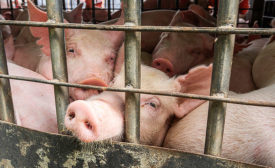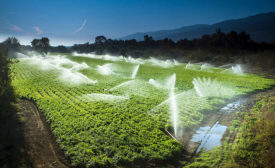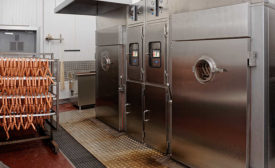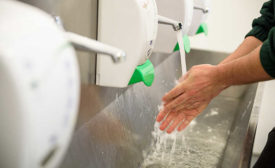ARTICLES
Tech | Processing
Companies — and consumers — are paying more attention to humane slaughter methods.
Read More
Tech | Ingredients
A simpler, cleaner marinade
The shift toward clean labels requires fewer but more effective ingredients.
Read More
Special Report | State of the Industry 2020
The state of the workforce 2020: covid-19 catalyzes a reckoning
Read MoreTech | Processing
Robotics and Automation: Back to the future
Robotics and automation in meat processing become smarter and more collaborative.
Read More
Tech | Processing
Repurposing wastewater
Innovative, sustainable cleaning systems shrink treatment systems.
Read More
Tech | Processing
Steamed up for food safety?
Hydrated surfaces appear effective at preventing bacteria from forming during the heating process.
Read More
Tech | Food Safety
Hygiene : What was old is new
Hand-washing and other employee hygiene practices once protected the food supply; now, those same procedures keep employees safe as well.
Read More
Stay ahead of the curve. Unlock a dose of cutting-edge insights.
Receive our premium content directly to your inbox.
SIGN-UP TODAYCopyright ©2025. All Rights Reserved BNP Media.
Design, CMS, Hosting & Web Development :: ePublishing










